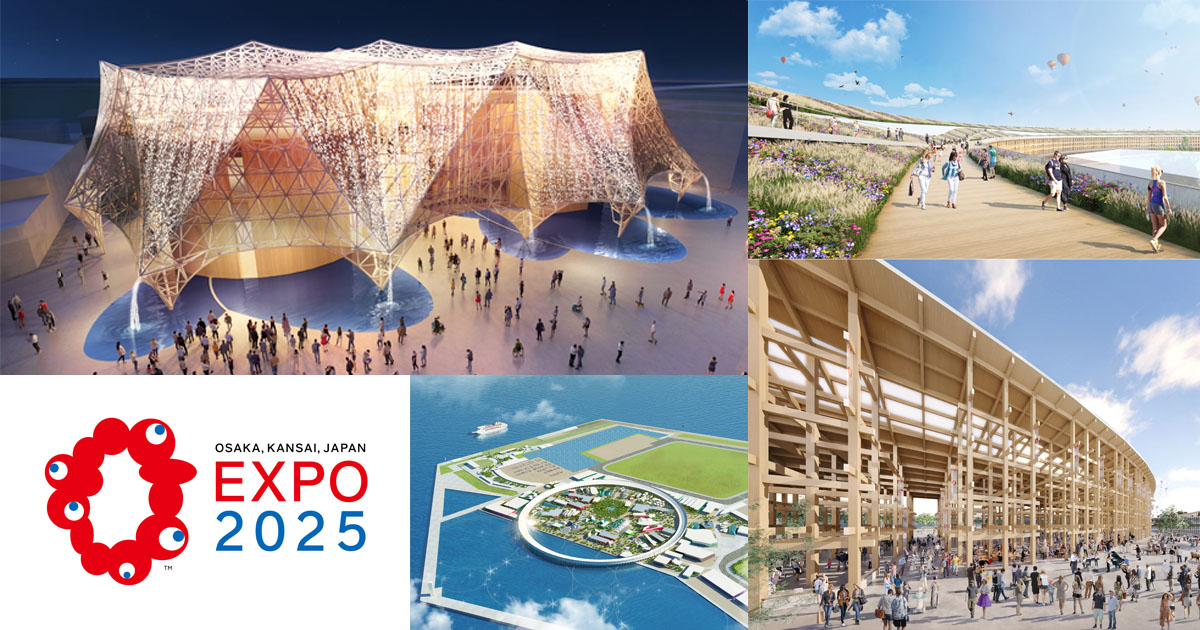With just two days left until its official closing on October 13, Expo 2025 Osaka is entering its final act. Launched April 13 under the banner “Designing Future Society for Our Lives,” the Expo has spent the past six months weaving together innovation, global cooperation, and sustainability into a grand human experiment. As the fair winds down, it invites one last wave of visits, reflection, and commemoration.
A World Showcase in Fast Forward
Spread across the artificial island of Yumeshima, Expo 2025 spans roughly 155 hectares and houses over 150 pavilions from nations, regions, and international organizations. Its three guiding subthemes — Saving Lives, Empowering Lives, and Connecting Lives — have shaped exhibitions ranging from global health and disaster resilience to digital inclusion and new mobility.
Many pavilions presented bold visions: AI tools to support aging populations, sustainable agriculture powered by robotics, circular economy models, and artistic installations that fuse tradition and future. Along the way, visitors experienced world-class architecture (notably Sou Fujimoto’s “Grand Ring”), immersive performances, night-time drone shows, and cultural programs. The European Union joined actively, leveraging the Expo to highlight themes of climate transition and social innovation.
Though the plan projected around 28 million visitors over six months, attendance in the early stages lagged. But momentum picked up toward the later months, as weekend crowds swelled and special events drew attention.
Final Festivities: “Thank-You and New Departure Festival”
On the closing day, Expo organizers will host the “Thank-You and New Departure Festival — THANK YOU for ALL” from 13:00 to 19:00 at the EXPO Arena “Matsuri.” This event, led by JR West Group, aims to honor everyone who made the Expo possible — participants, visitors, stakeholders — and to mark a symbolic passing of the torch as the world looks forward to Expo 2030.
The closing ceremony will include a handover to the next host, Saudi Arabia, bridging a final moment of continuity between this Expo and the next global gathering of ideas.
Highlights, Challenges, and Lasting Legacy
As the curtain falls, several standout features and controversies of Expo 2025 are coming into sharp focus:
- Architectural marvels: The Grand Ring, a sweeping wooden arc designed by Sou Fujimoto, has been one of the most visually striking symbols of the Expo.
- Pavilion storytelling: The Women’s Pavilion, developed with Cartier and designed by Yuko Nagayama, offered immersive narratives on gender equality, sustainability, and memory.
- Technical and health scares: Midway through the Expo, organizers paused the popular Water Plaza shows and closed parts of the Forest of Tranquility after detecting legionella bacteria in the water systems. Safety measures and disinfection protocols were intensified in response.
- Insect and infrastructure complaints: Visitors also reported nuisance from midges (tiny insects) populating wetlands near water areas. Some venue layouts and shading concerns were criticized in early reviews.
- Budget and payment issues: Delays and nonpayment to subcontractors on certain overseas pavilions surfaced in media reports, highlighting the logistical fragility of such large-scale projects.
- Attendance rebound: Although initial months saw modest footfall, Expo organizers noted surges in visitors in the autumn period. Many pavilions extended programming and night events to attract latecomers.
In terms of post-Expo legacy, local governments and private developers are already eyeing future uses for the site. One plan envisions transforming part of the Grand Ring area into a public park, while adjacent plots may host entertainment complexes, green spaces, or even a motorsport circuit. Planners stress that much of the development will emphasize sustainability, climate resilience, and community access.
Why This Expo Matters — Even at the End
In these last two days, Expo 2025 Osaka remains more than just an exhibition — it is a reflective mirror of global aspirations and anxieties. As the world grapples with climate stress, demographic change, pandemic recovery, and socio-technological disruption, the ideas on display here offer hope that we might reimagine systems of health, mobility, connection, and inclusion.
Moreover, the Expo offered Japan a stage to project leadership in soft power, innovation, and collaborative diplomacy. Hosting over 150 countries and thousands of innovators, it positioned Osaka (and Japan) as a nexus where East meets global imagination.
The closing also invites the public to ask: What will carry forward? Which ideas will become policies, infrastructures, or cultural practices? The ultimate value of an Expo lies not in the spectacle but in the follow-up — in how cities and nations adopt, adapt, and act on the seeds planted here.
Call to Action
If you’ve not yet visited Expo 2025, these next two days are your final chance to walk the Grand Ring, catch the drone show, experience the pavilions, and absorb the spirit of possibility. For those watching from afar, this moment is a brief pause — take the themes and lessons presented here into your networks, your communities, your future.
Expo 2025 ends on October 13. Let’s make these final hours count.

